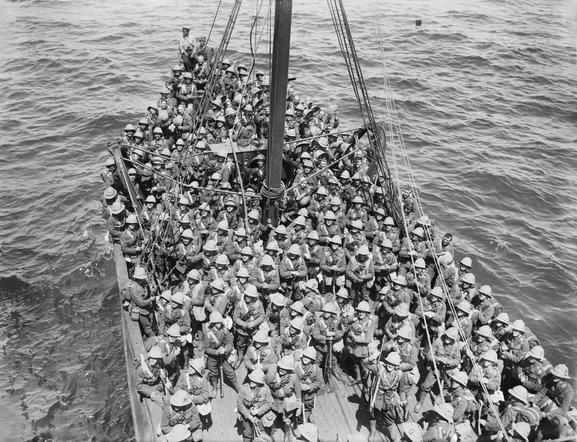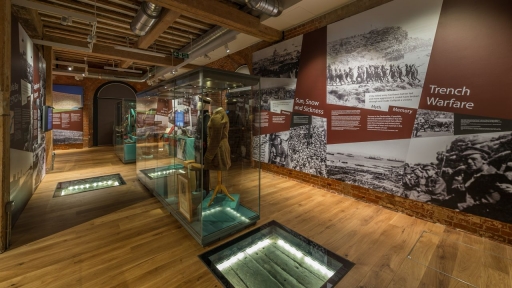A new exhibition, described as ‘challenging the historical perceptions’ of the Gallipoli campaign, has opened in the UK at the National Museum of the Royal Navy, Portsmouth.
April 2015 marks the 100th anniversary of the Allied landings in Turkey and the start of an eight-month campaign in 1915 which ended in withdrawal at the close of the year.
The Royal Naval Museum says ‘never-before-seen exhibits’ and witness accounts are used to ‘re-tell the misunderstood story of Gallipoli, which has been distorted by national myth.’
Naval historian Nick Hewitt, Strategic Development Executive at the museum, says: “The exhibition is designed to put the Royal Navy back at the heart of the Gallipoli story.
“The importance of the Navy’s contribution from Royal Marines, the submarine service, the Royal Naval Air Service and the surface fleet, is too often overlooked by history. We plan to set the record straight and tell the story through the use of the magnificent collections from across the National Museum of the Royal Navy.”
The attack was originally intended as a purely naval operation, aimed at knocking the Ottoman Empire out of the war and opening a supply route to Russia.
After British and French warships failed to force the Dardanelles Strait in March 1915, troops from the UK and France, supported by Australians and New Zealanders, fought their way ashore.
The aim was to secure the rugged Gallipoli peninsula overlooking the narrow channel linking the Mediterranean to the Sea of Marmara, Constantinople (now Istanbul), and the Black Sea.
 Lancashire Fusiliers waiting to disembark at Cape Helles, May 1915 © IWM (Q 13219)
Lancashire Fusiliers waiting to disembark at Cape Helles, May 1915 © IWM (Q 13219)
The Royal Naval Museum says its ‘Gallipoli: Myth and Memory’ exhibition will show that Britain’s navy was instrumental in supporting operations on land, and highlight how the campaign was supplied and eventually evacuated by all branches of the service.
The evacuation is widely considered the best-executed chapter of the campaign: the last Allied troops departed by January 9th 1916, with few casualties.
Historical perceptions challenged by ‘Myth and Memory’ include the argument that Gallipoli was the missed opportunity to end the First World War.
The Royal Naval Museum comments: “Many modern historians now agree that defeating Turkey wouldn’t have ended the war and may have kept Russia involved for longer.
And it continues: “Often thought of as a British defeat fought by Australian and New Zealand (ANZAC) soldiers, Gallipoli is understood by many as a failure of British leadership. In reality, Gallipoli was an Allied operation approved by Allied politicians; planned and executed by British, French and Anzac commanders working in coalition. “
“Gallipoli: Myth and Memory’ is the second in the National Museum of the Royal Navy’s series of exhibitions about The Great War at Sea 1914-1918. It runs until January 31st 2016. More details can be found here.
On August 6th 2015, the surviving British warship of the Gallipoli campaign, HMS M.33 will open to the public at Portsmouth Historic Dockyard as part of the Centenary commemorations.
Information supplied by the National Museum of the Royal Navy, Portsmouth
Images courtesy of the National Museum of the Royal Navy and Imperial War Museum (Lancashire Fusiliers) © IWM Q 13219
Posted by: Peter Alhadeff, Centenary News
